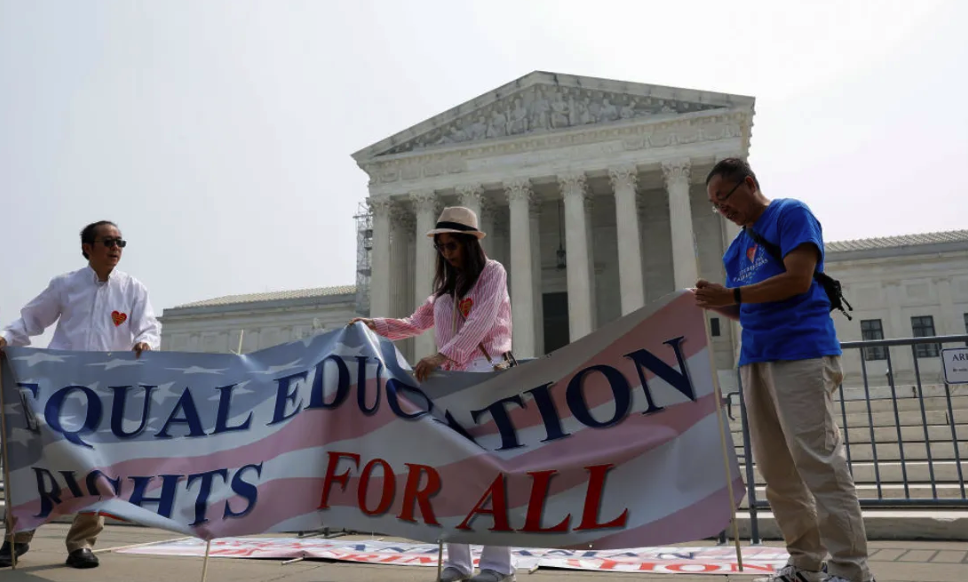We often think of college admission as a process where students apply to colleges in their interest by presenting their most authentic selves. By and large, students and their families hope colleges will accept them for their passions, academic achievements, and ambitions for the future.
As a Chinese-American student starting my sophomore year, this could not be further from the truth. Based on my conversations with students and Chinese parents across the community, Asian-American high school seniors are spending considerable effort manipulating the appearance of their applications to seem “less Asian” this year.
From a young age, our parents told us we had to work harder than peers of other races for the same chance of admission. Many Asian American high school seniors I knew took activities such as math club and piano off of their application activities lists. Anticipating that admissions officers would see the piano as a more “Asian” instrument, a friend of mine decided to switch from the piano to the flute in middle school. I knew several students who emphasized sports in their application to appear more assimilated.
This perversion of a fair college admissions process is the result of Affirmative Action, the policy of taking an applicant’s race into account for the purpose of creating a diverse class. Across the world, students applying to U.S. colleges aren’t presenting their genuine selves because Affirmative Action incentivizes applicants to present a racial identity that would ostensibly give them a higher chance of admission.
Affirmative Action gives preference to underrepresented minority groups such as those who are Black and Hispanic, hence requiring colleges to restrict the number of White and Asian applicants. This creates a system where your race determines your standard of admission. As a result of this phenomenon, race becomes another variable students and families can try and manipulate to optimize their chances at admission.
While the Chinese-American parents in my community are overstressed about how their children might appear “too Asian” or whether they should even answer the race question on the application, they’re not alone; rich White students similarly want to minimize anything in their application that makes them appear rich and White.
The phenomenon, coined “racial gamification” by Dr. Tyler Austin Harper, a professor at Bates College, repeats itself for every racial demographic. Dr. Harper, in a New York Times op-ed, recounts stories of working with high schoolers wanting to alter the racial image their application presented. He recalls one Asian student who expressed that “good colleges don’t want to let in Asians…because they already had too many.” She knew many “Asian and Asian-American friends…with stellar extracurriculars and sterling test scores who she said had been rejected from even their safety schools.”
Dr. Harper believes that the end of Affirmative Action will exacerbate this gamification by forcing them to be more creative in expressing their preferred racial image since the racial checkbox won’t be considered anymore. I disagree because the turning down of Affirmative Action does not deny any students equal educational opportunity, but rather creates a system where applicants have no incentive to try to change their racial appearance in order to remove all racial connotations from students’ achievement.
With the end of Affirmative Action, race will no longer be used to elevate or diminish a student’s achievements.
“Nothing prohibits universities from considering an applicant’s discussion of how race affected the applicant’s life, so long as that discussion is concretely tied to a quality of character or unique ability that the particular applicant can contribute to the university,” said Supreme Court Justice Roberts.
Race now will only be considered if an applicant shows that their racial identity has contributed to their strength as an applicant. Robert’s quote points to a fundamental issue with using race to achieve diversity: that race is merely an information shortcut for the real diversity that we seek. If different life experiences, socioeconomic status, and geographic diversity contribute to “quality of character”, let’s consider the quality of character of an applicant over assuming all applicants of one race will bring a certain positive quality. We can achieve diversity with other, more specific factors than a racial checkbox.
Edited by Phoebe Clayton



